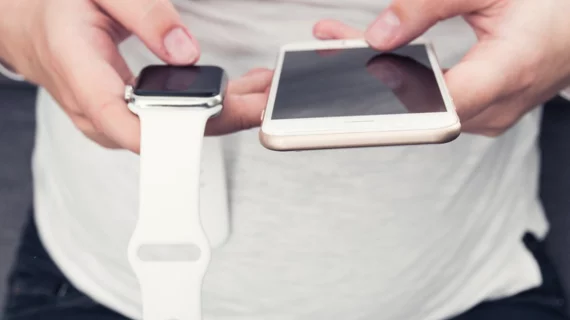Apple Watch helps ID AFib, Cleveland Clinic says—but there’s still a ways to go
A study published Feb. 25 in Circulation suggests wearables are useful for detecting CV abnormalities like atrial fibrillation, but there’s still a long way to go before they can be trusted for clinical management.
Researchers at Cleveland Clinic studied 50 postoperative cardiac surgery patients in an attempt to determine the utility of the Apple Watch 4—a high-tech smartwatch with ECG capabilities—in detecting AFib.
“A standard ECG remains the gold standard for detecting AFib,” Marc Gillinov, MD, chair of thoracic and cardiovascular surgery at Cleveland Clinic, said in a release. “At this point, consumer wearables and watches don’t have the accuracy to replace the ECG. A diagnosis of AFib requires input from a physician.”
Gillinov et al. obtained three heart rhythm assessments per day for two days for each of their patients, resulting in six measurements per patient. They compared those telemetry ECG results to readings from the Apple Watch, which automatically generates a PDF and rhythm strip of the ECG waveform that’s saved to the Apple Health App. Patients were provided an Apple Watch 4 and instructions on how to activate the watch’s heart rhythm reading capabilities.
The authors said that ECGs generated by the Apple Watch were reviewed by a cardiologist according to Apple’s instructions. According to the standard telemetry ECGs, half of the team’s patients had more than one occurrence of AFib during their hospital stay; telemetry ECG picked up on all 90 instances. Looking only at what the Apple Watch displays on its 40-millimeter screen, Apple’s software identified only 34 of those instances, or 41% of the total.
The display also identified AFib in 19 of 25 patients who experienced an arrhythmia more than once, but reviewing the display data in conjunction with Apple’s retrievable PDF of waveform strips resulted in improved identification. The combo correctly identified 96% of instances of atrial fibrillation in users, and it identified AFib in 24 of the 25 patients who experienced more than one episode.
In patients whose hearts were in normal sinus rhythm, the Apple Watch didn’t send out any notifications of AFib, indicating that there weren’t any false-positives.
“The data suggests that further technological advances are necessary before these wearables can be fully incorporated into current clinical management,” Milind Desai, MD, director of clinical operations at Cleveland Clinic, said in the release.

